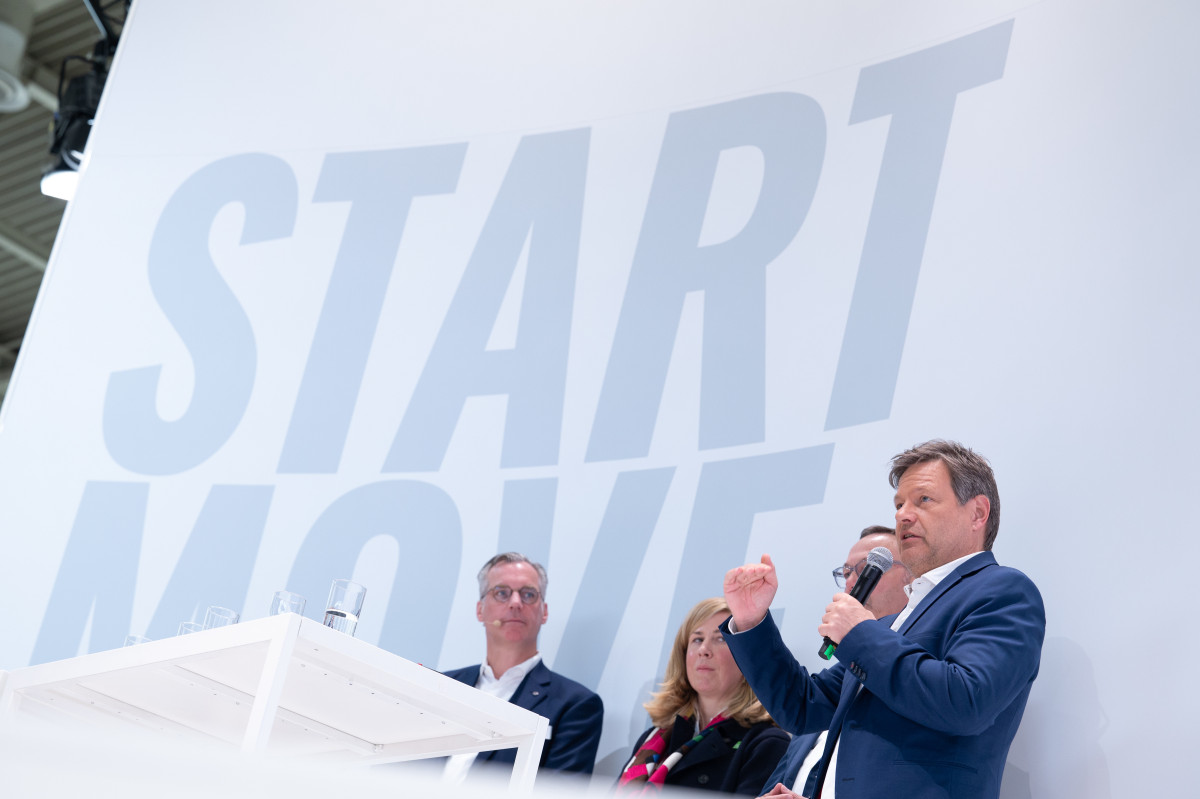German industry aims high with green steel definition and sustainable cement production
Several companies from Germany’s heavy industry sector have launched new projects aimed at making the production of steel and cement more climate friendly and are paving the way for the sustainable transformation of the economy. On the sidelines of the industry fair Hannover Messe, economy and climate action minister Robert Habeck used the projects to showcase his commitment to reconciling climate targets with the future growth of industry.
Together with industry lobby group Wirtschaftsvereinigung Stahl, the Green Party politician introduced a new industry standard for climate friendly steel. Habeck’s ministry (BMWK) and industry companies agreed on a definition for the Low Emissions Steel Standards (LESS), arguing they could become a leading concept for global efforts to make steel production more sustainable.
The minister lauded LESS as an important industry initiative for making a company’s emissions reduction efforts more comparable with that of others. “Sustainability labels are an important lever for creating transparency and incentives for climate friendly basic materials and products in the market,” argued Habeck. He said the LESS definition had been the result of a stakeholder consultation carried out by the BMWK to ensure broad acceptance among industry professionals, researchers and policymakers.
Bernhard Osburg, head of industry group Wirtschaftsvereinigung Stahl, said the new standard will help companies to gain initial funding for transformation projects. To secure investments, “progress in terms of decarbonising our sites must be visible and comparable to each other,” he said. Osburg added that the question of how to define climate-friendly steel has been debated intensively in the industry for a long time. “I’m glad that we’ve reached a solution together that is based on international rules and standards and aims for a broad consensus,” he said.
The Wirtschaftsvereinigung Stahl said Germany is the first major steel producer introducing a standard definition that covers all production steps in steelmaking, including furnace-based and scrap metal-based procedures. “LESS is much more ambitious than similar definitions,” the group said.
“A prototype for decarbonising the cement industry”
After the event at the Hannover Messe, Habeck moved on to an appointment in the northern German state of Schleswig-Holstein, where construction work has started on what is hailed as one of the world’s first "CO2-neutral" cement plants. However, the plant will use carbon capture technology, catching "almost 100 percent of CO2 emissions" from cement clinker production. Habeck, together with the construction material companies Thyssenkrupp and Holcim, officially launched the project.
“The cement industry faces a particularly difficult challenge in decarbonisation,” said Habeck. He added that the new project “shows how it can be done” and that the cement plant will not only capture carbon emissions resulting from production, but also use CO2 as a raw material for further processing. “This is a textbook example for the green transformation,” argued Habeck.
Daniel Günther, state premier of Schleswig-Holstein, called the project “a prototype for decarbonising the cement industry.” Cetin Nazikkol, board member at Thyssenkrupp, said cement production causes about seven percent of worldwide emissions, making a shift towards climate neutral procedures essential for the industry’s future.
The company’s “pure oxyfuel” technology, to capture and use carbon emissions, could play an important role in this process, said Nazikkol. “Given annual cement production of more than four billion tonnes, we see enormous growth potential for our innovative technology,” he added.
Thyssenkrupp said conventional production emits more than 800 kilograms of CO2 per tonne of cement, which in Germany alone caused 17 percent of all industry emissions in 2019. A key feature of the new technology is using pure oxygen, rather than the surrounding air, in combustion processes, which greatly facilitates carbon capturing, according to Thyssenkrupp.
“Subsequently, the sequestrated gas will be processed to pure CO2 and can then be used as a basic material in chemical production, as a resource in other industries, or be stored,” said Nazikkol. The plant is scheduled to go into operation in 2028.
However, environmental group BUND warned that the emissions reduction project could lead to much higher water and energy use at the cement plant. Lothar Wittorf, a local representative for BUND said the project's launch was a “distraction from massive environmental problems.” The need for cooling water could be up to 15 times higher with the new CO2-neutral production process, while natural areas could be wrecked for the construction of the pipelines for the transport of CO2, BUND wrote.


